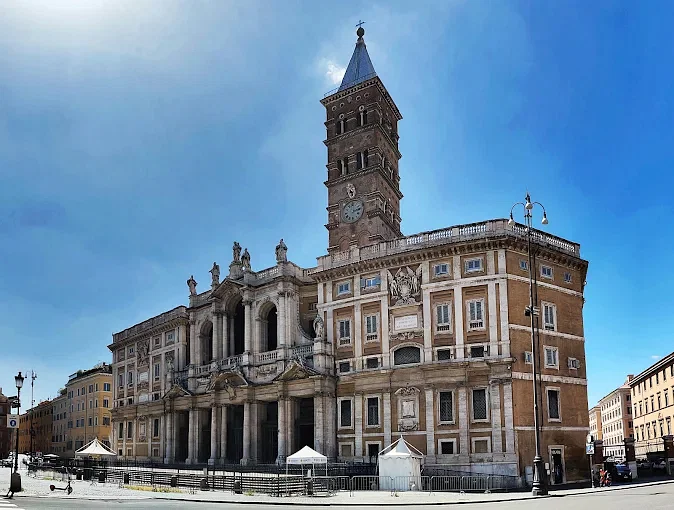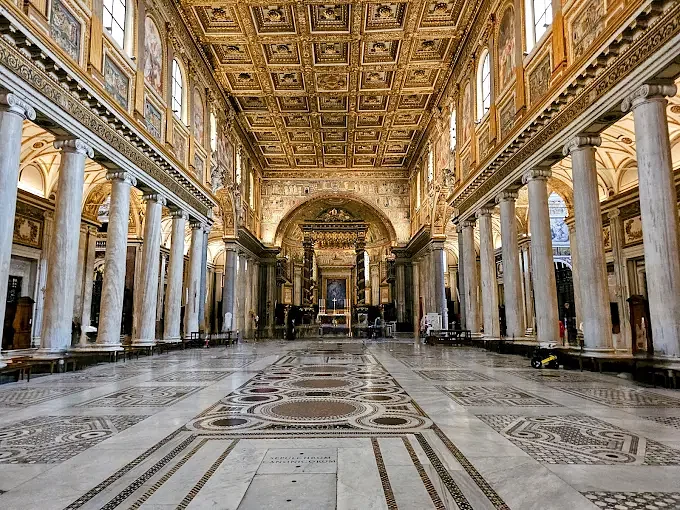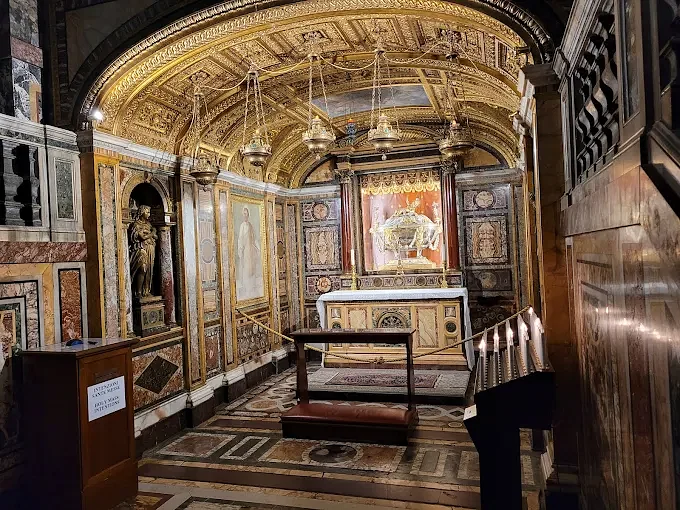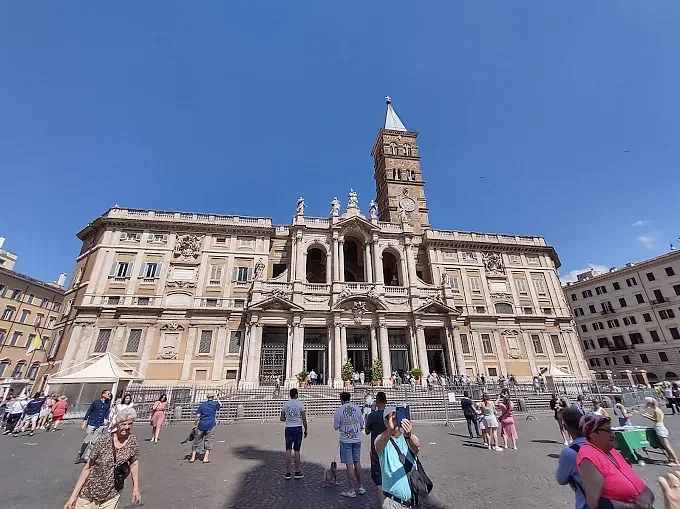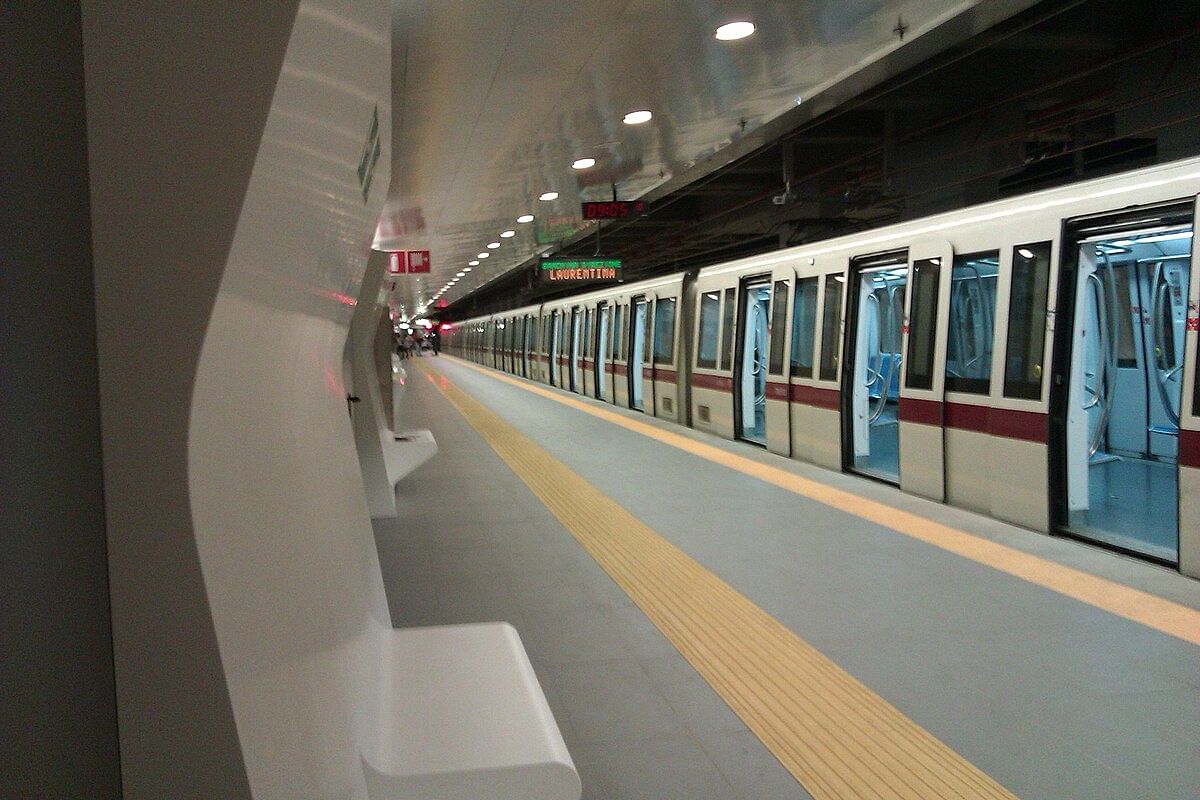Listen to the whispers of the mosaics and marble, tell tales from 1600 years ago, as you step into Santa Maria Maggiore in Rome, a grand basilica where ancient legends come to life.
This place is not just a church but a living treasure with art, faith, and history blending under one roof.
The Santa Maria Maggiore in Rome invites you to a history through time with its 75-meter bell tower, or the miraculous August snowfall, the basilica will leave you speechless with its grandeur during your Europe Tour.
Santa Maria Maggiore History
The Santa Maria Maggiore history dates back to 432-440 AD, and according to legends, it is believed that the Virgin Mary guided Pope Sixtus III in a dream that the snow would fall in August, and in 352 AD, snow fell on the Esquiline Hill. For this reason, the Pope built the first church on that particular spot.
In the 8th century, the expansion of the church was ordered by Pope Paul I, which was added to the oratory of the Sancta Sanctorum.
By the end of the 15th century and the beginning of the 16th century, Popes Sixtus IV and Paul V ordered popular artists like Antonio Vassalletto and Carlo Maderno to decorate the interior and the facade, making it one of the popular Rome Basilicas and also one of the best places to visit in Rome.
Santa Maria Maggiore Museum: What’s Inside?
You might wonder why the Santa Maria Maggiore Museum is so popular. Well, it’s because of the abundance of artwork that can be admired. Here are the things that you will find inside the Santa Maria Maggiore in Rome:
1. Grand Nave and Ancient Columns
- Five Aisles: You will come across the Five Aisles, which is the basilica’s wide central nave flanked by two aisles on each side, creating space for a light-filled interior.
- Spolia Columns: Witness some forty ancient marble columns, all taken from the Roman temples that line the five aisles, and each is capped with Corinthian capitals carved during the 4th to 5th century.
2. 5th Century Mosaics
- Transept and Triumphal Arch: The Arch, located above the nave, is covered in gold-ground mosaics, which are a beautiful depiction of the key events in the life of Christ.
- Apse Mosaic: The Apse Mosaic is Rome’s oldest mosaic work, which shows the Mother Mary enthroned and crowned by the Christ Child, surrounded by angels and saints.
3. Ceiling Paintings
- Renaissance Masterpieces: The ceilings of the Santa Maria Maggiore are the most interesting part of the tour, so when you are there, make sure you look up and witness the beautiful ceiling panels which has been adorned with the scenes of the life of Mother Mary, set against a glittering gold leaf by artist Domenichino.
4. Other popular works that you will find at the museum are:
- Geometric Pattern laid in the 12th-13th centuries featuring interlocking circles, stars, and crosses.
- Private Papal Chapel commissioned by Pope Sixtus V in the year 1585. The Papal Chapel is decorated with frescoes by artists Cesare Nebbia and Cristofor Roncalli.
- Bernini’s Design was laid out by Gian Lorenzo Bernini during the early 17th century.
- Papal Altar, which is reserved for papal masses and liturgies.
- Tombs of Popes, including that of Pope Clement VIII.
- Baroque detailings throughout the aisles and chapels.
Suggested Read: National Roman Museum
Santa Maria Maggiore Timings
The museum of Santa Maria Maggiore timings are:
- Monday to Saturday: 9:30 a.m. to 6 p.m.
- Last Admission: 5:30 p.m.
- Sunday & Public Holidays: Closed(Basilica itself remains open, but the museum spaces are not accessible.)
Santa Maria Maggiore Tickets
- Admission fee per adult: ₹282
- Reduced rates for students and senior citizens: ₹188
How To Reach Santa Maria Maggiore?
The Santa Maria Maggiore is one of Rome’s major Basilica and a historic landmark, and here’s how you can reach it:
- By Air: The closest airport to Rome City centre is the Rome Fiumicino Airport, also known as the Leonardo da Vinci Airport. From the airport, you can take the Leonardo Express train to Roma Termini, from where the Basilica is just a few minutes' walk away.
- By Metro: The metro is one of the most convenient ways to get to the Basilica, with the closest metro stops at Vittorio Emanuele at Line A, and Cavour at Line B. From these two stops, the basilica is a 5 and 10 10-minute walk from here, respectively.
- By Bus: There are several number of bus lines near the Basilica di Santa Maria Maggiore. The closest bus stop is the Termini Merulana or Santa Maria Maggiore.
- By Tram: If you are looking for a scenic ride to the Basilica di Santa Maria Maggiore, then you can go for a tram. The closest tram lines include sites 5 and 14, which stop at the Brancaccio/Santa Maria Maggiore.
- By Taxi: Taxis are undoubtedly one of the best options while you are exploring an all-new country. It is convenient, and there is no fuss.




